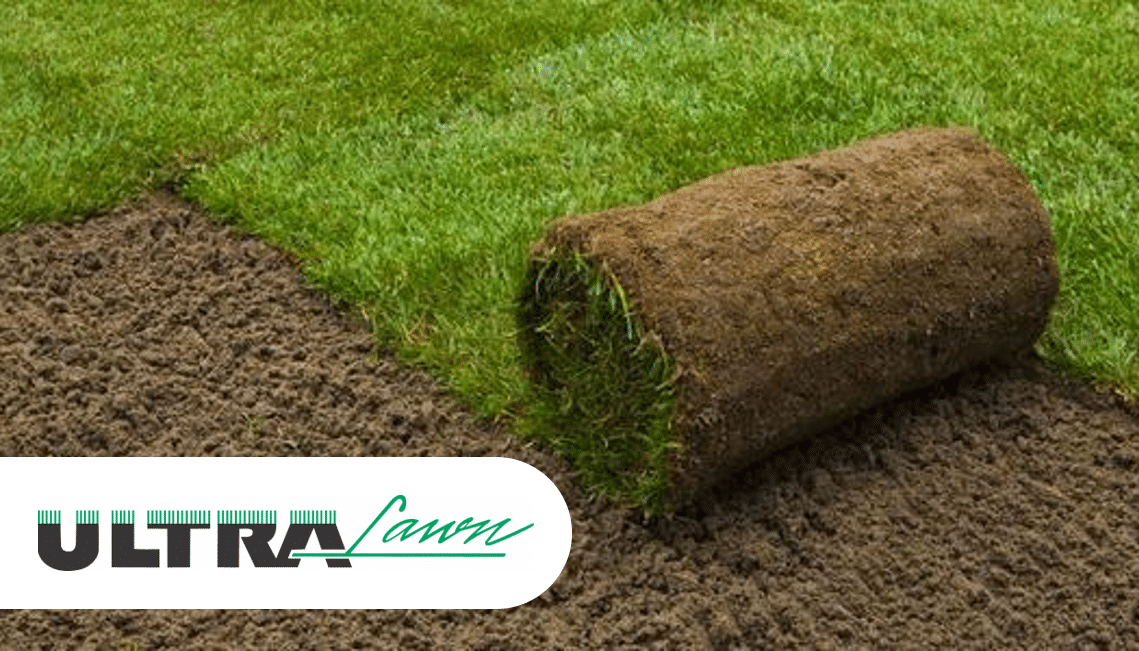
With these basic care instructions you should be on track to have one of the nicest lawns in the neighborhood! As the advocates for professional lawn care in eastern Iowa, ULTRALawn always welcomes your calls or emails if you have questions.
First Month of Care:
Watering
The lawn is very stressed from having its roots cut during the transplant. It is important to water enough that the moisture gets through the sod and into the soil below where the rooting will take place. You need to keep this soil damp for the next 4 weeks or until the roots have successfully knitted into the ground. Keep an eye out for wilting grass blades, a purple or dull tint in the grass can be noticed when it is getting dry.
Mowing
Mow the lawn when it has grown to approximately 3.5” – 4” tall. 3” – 3.25” of the grass blade should remain after mowing. Never remove more than one third of the grass blade at once or mow when the lawn is wilting. Mowing too short will stress the lawn and allow for further weed infiltration.
Treatments
If the lawn did not have a starter fertilizer application done at the time of installation you should do one right away. The lawn cannot receive any weed control right after installation, so you should expect to have a few weeds.
Ultimately, the lawns initial success will be determined by reducing stress as much as possible with your watering and mowing habits.
The First Year of Care:
Watering
It is important to start training the grass roots to work deeper into the ground. In order to do this you need to start watering less frequently and more deeply. This will allow the plants to build a stronger root system that will be less prone to disease issues and will require less watering during dry spells. There is a fine line between building stronger roots and stressing the lawn; at this time it is better to error on the side of too much water than not enough. The goal will be to get the roots established well enough that you don’t need to water more than a few times a week even during hot/dry spells.
Mowing
Newer bluegrass lawns are very susceptible to a fungus called Ascochyta Leaf Blight. Never mow when the grass is wilting in order to avoid getting this disease in your lawn. If you suspect that the lawn may be starting to wilt it is best to water the day before you plan to mow.
Treatments
Once the lawn has been mowed a couple times and the sod is well knitted to the ground it is time to start doing applications. If you put this off by more than 6 or 7 weeks you will regret it down the road. There is at least one seasonally important application to be done to a lawn every part of the growing season.
Established Lawn Care:
Watering
At this point you don’t need to worry about your lawn dying due to lack of moisture as much. Established bluegrass lawns have the ability to go dormant and recover from most dry spells. To maintain a lawn with more vigor and less weed infiltration its best to water approximately 1 to 2 inches per week depending on how much rain the lawn has received. In some cases more water is needed because of heat, wind, or soil conditions.
Mowing
During the early spring and late fall it is good to mow at around 2 – 2.5 inches in height. During the summer around 3.25 inches is a good height. In the weeks between you should gradually adjust your mower setting towards the next seasonal destination height every other weekly mowing. Mow frequently making sure to never remove more than 1/3 of the grass blade at a time.
Treatments
When looking for a service to do your treatments or when planning your program keep these things in mind:
- Apply quality fertilizer at least 4 times per season. During the summer months make sure a time released fertilizer is being used.
- Apply 2 split applications of crabgrass preventer. Our seasons vary enough in Iowa that one doesn’t always suffice.
- Apply broadleaf weed control as needed during the late spring and early fall. The fall is actually the most important time of the year to rid your lawn of dandelions.
- A grub preventer application is a wise thing to consider. If you had a grub outbreak you may need to start back at square one with your lawn. It also helps reduce the likeliness of having other turf damaging insect issues.
- ULTRALawn lawn program customers benefit from free service calls which is nice in case an issue ever does arise.
Aeration
Every spring and/or fall aeration should be done. Without regular aeration a thatch problem will develop. Thatch problems eventually lead to larger problems such as disease or insect problems.


No comment yet, add your voice below!